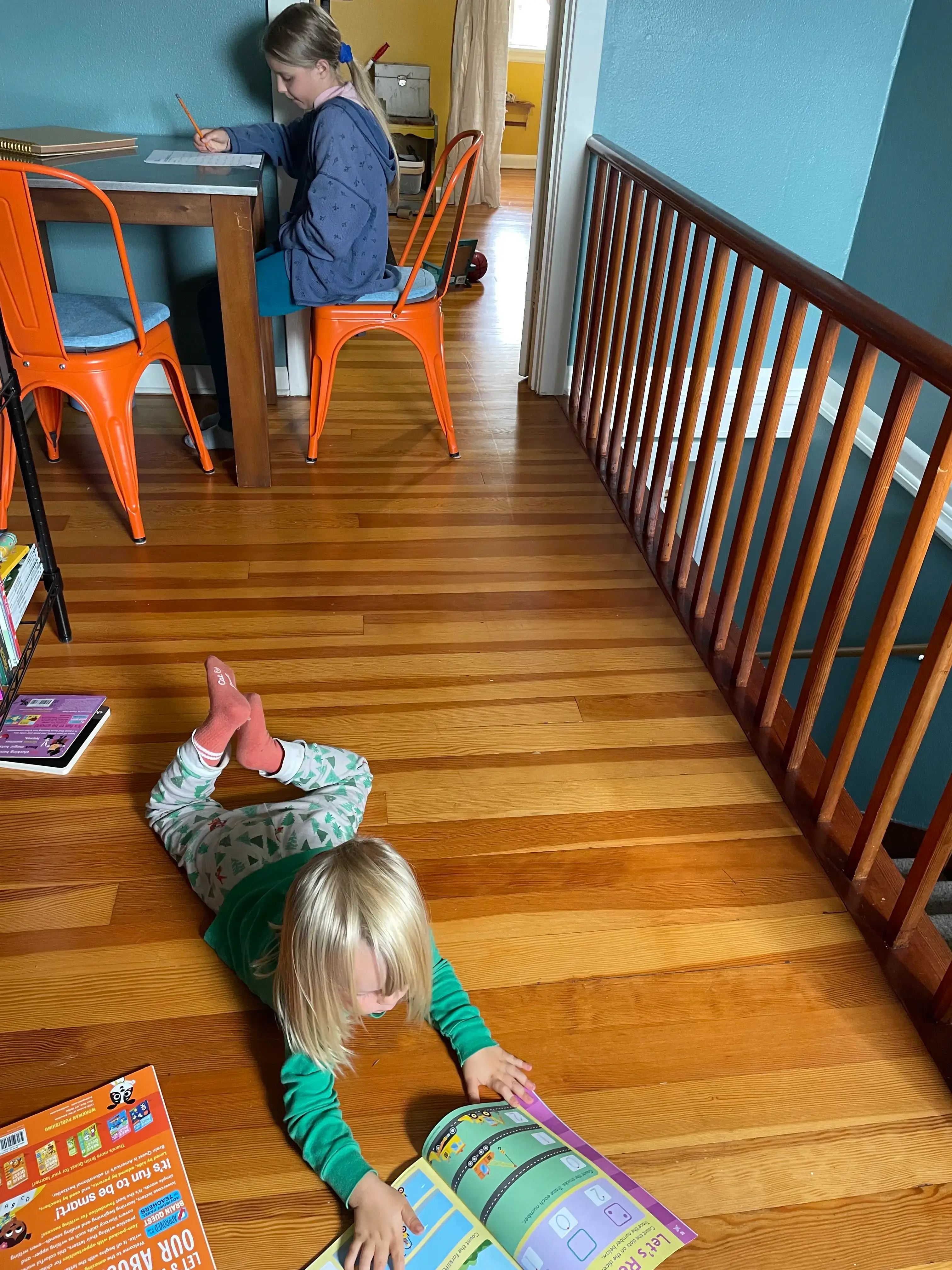September 29, 2025

Homeschooling one child can feel overwhelming...add multiple kids into the mix and it can feel impossible. Different grade levels, learning styles, and subject needs often compete for your time and attention. But with a little strategy and flexibility, you can create a homeschool schedule that works for everyone in your family.
When you’re homeschooling several children, it’s easy to feel pulled in ten directions at once. A well thought out schedule gives your day structure and ensures that each child gets what they need. More importantly, it keeps you from feeling like you’re constantly playing catch-up.
A good multi-child homeschool schedule:
The first step is reviewing your curriculum and finding overlap opportunities. Not every subject needs to be taught separately.
Examples include:
Finding overlap means you’re teaching once instead of three or four times, saving time and energy.

When overlap isn’t possible, rotations are your best friend. While one child works with you directly, the others rotate through independent work or play.
A simple rotation might look like this:
This system ensures each child gets focused attention without leaving others aimless.
Older kids can be wonderful helpers in a homeschool environment, but it’s important to balance their role so it doesn’t take away from their own learning.
Ways siblings can support each other:
This builds family teamwork while also reinforcing what older kids have already learned. Just be mindful not to make older siblings the default “assistant teacher” - their schoolwork still needs to come first.
Independent work gives you breathing room while teaching multiple ages. It also encourages confidence in children being in charge of their own learning. Build in time for each child to tackle assignments on their own.
Ideas for independent work:
"The key is choosing tasks kids can truly handle without you. These blocks allow you to focus on another child without constant interruption."
Every family’s rhythm will look different, but here’s one example of how you might structure your day with three children:
Notice how group subjects and rotations weave together for balance.
Even the best homeschool schedule won’t go perfectly every day. Someone will get sick, the toddler will dump crayons all over the floor, or work will run long. That’s normal. The key is to see your schedule as a rhythm rather than a rigid plan.
If math takes longer than expected, adjust. If your family gets hooked on a great read-aloud, let it run longer. Homeschooling gives you the freedom to make learning fit your family, not the other way around.
Homeschooling multiple kids is challenging, but it’s also one of the most rewarding family adventures you can take. By finding overlap in your curriculum, using rotations, encouraging sibling support, and building independent work blocks, you can create a schedule that keeps everyone on track without exhausting yourself.
Remember: your schedule doesn’t need to look like anyone else’s...it just needs to work for your family. With flexibility and intention, homeschooling multiple kids can move from chaos to harmony.
Q: How long should homeschool days be with multiple kids?
A: Most families find 3–5 hours of focused learning works well, with breaks and group lessons included.
Q: Should all my kids follow the same schedule?
A: Some overlap is good for family rhythm, but personalize sections of the day to match each child’s focus time.
Q: How do I teach older and younger kids at once?
A: Rotate between them - older kids can work independently or help briefly while you teach younger ones.
Q: What if our schedule keeps falling apart?
A: That’s normal! Treat your schedule as a guide, not a rulebook. Adjust weekly as needed.
Q: Is it okay to combine subjects across grade levels?
A: Yes - many families do. Shared read-alouds, experiments, and discussions make learning more connected and efficient.
